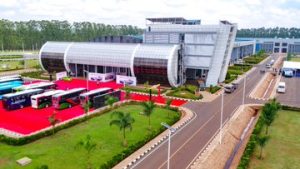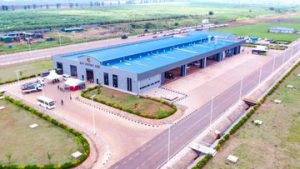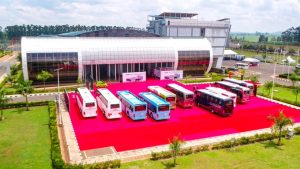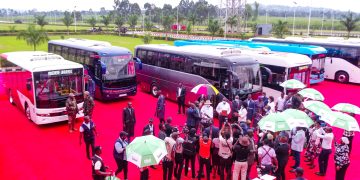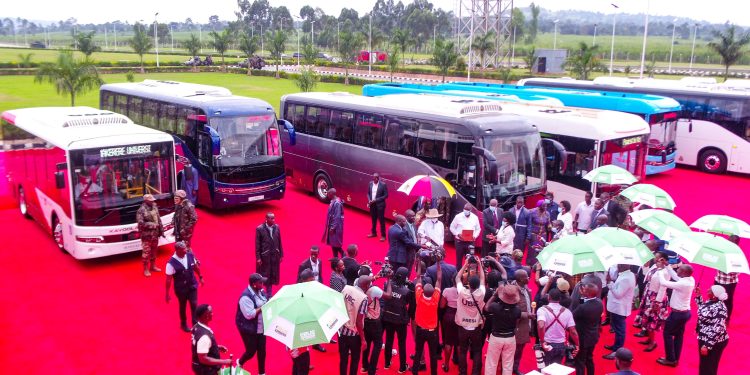Jinja – President Yoweri Kaguta Museveni has commissioned the Kiira Vehicle Plant in Jinja, marking a historic milestone for Uganda’s industrialisation and green technology ambitions.
The facility, built through a partnership between the National Enterprise Corporation (NEC) and Kiira Motors Corporation (KMC), is the largest and most advanced electric vehicle production plant in Africa.
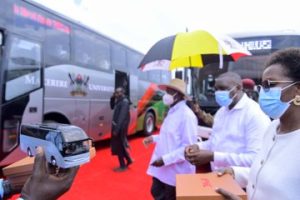
Speaking at the ceremony, President Museveni hailed the project as a key driver of Uganda’s economic transformation, announcing that the country’s economy is growing at 7% and is expected to surpass 10% growth once oil production begins.
“We have a clear vision for what will transform our society,” Museveni said. “This includes processing our rich iron ore reserves into high-quality steel to reduce the $900 million we currently spend on steel imports and leveraging our substantial lithium deposits for the growing electric vehicle market.”
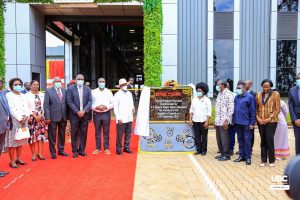
During the commissioning, President Museveni revealed how immense scientific innovations like the Vehicle Manufacturing Plant were contributing to the national economic growth of Uganda, saying it employs hundreds of Ugandan engineers and it’s poised to save the country USD 800 million from car imports. He also highlighted its positive impact on the country’s balance of trade deficit on vehicles.
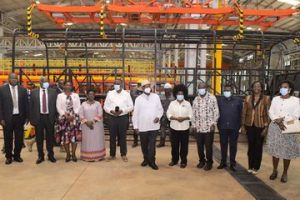
Museveni noted that Uganda possesses some of the best iron ore in the world in Kabale and Butogota, as well as significant lithium reserves in Ntungamo and other regions. These resources, he said, will underpin Uganda’s push for industrial self-reliance and sustainable development.
“These young people I found in the factory have jobs, where would they be working if we didn’t have Kiira?” he inquired. “We have got some steel factories using scrap, but scrap isn’t good enough for this type of work; therefore, it’s these new factories that we are building now that are purifying our iron ore into high-quality steel, which is needed here. Uganda is fortunate to have some of the biggest iron ore deposits in the world in Kabale and Butogota,” he said.
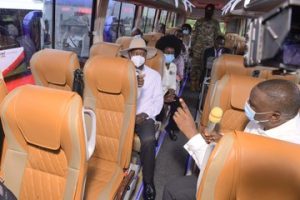
“For the first time, the transport sector is beginning to be integrated in the form of the Kiira vehicle plant. This is what is beginning to happen. If we do it successfully, we shall save USD800 million from steel alone.”
Additionally, President Museveni rallied Uganda scientists and leaders to focus on production for more sectors of the economy to address the huge haemorrhage of funds into importation.
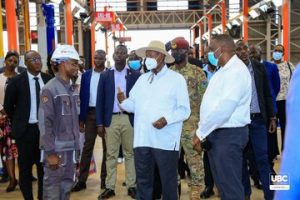
He explained that different sectors of the economy require complementary local production lines of their inputs that he described as vertical and horizontal economic integration needed for Uganda and Africa at large to thrive.
He reminded Africans to regain their self-confidence, focus on mechanisation, citing the example of the transformation of the dairy industry; a similar approach is needed to produce lithium batteries and other products required for full economic integration.
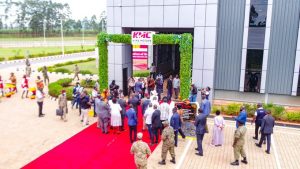
From Vision to Reality
The Kiira Vehicle Plant project began with a Memorandum of Understanding signed on January 16, 2019, between Lt Gen James Mugira, NEC’s Managing Director, and KMC’s CEO. Construction commenced in April 2019, with Uganda’s UPDF Engineers Brigade playing a pivotal role in delivering the project on time and at lower costs compared to foreign contractors.
Gen (Rtd) Joram Mugume, Chairman of the NEC Board of Directors, expressed gratitude to President Museveni for entrusting Ugandan institutions with such a transformative project: “Historically, large-scale projects were executed by foreign firms, with profits leaving the country. This plant shows we have the capacity to deliver projects of strategic importance using our own expertise and resources,” Gen Mugume said.
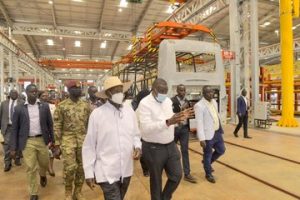
Driving Innovation and Jobs
The plant’s commissioning reflects Uganda’s broader commitment to green industrialisation, technological innovation, and youth employment.
Kiira Motors CEO, Paul Isaac Musasizi, emphasised the company’s mission to create “meaningful and dignified work” for young Ugandans through cutting-edge automotive technologies: “We are ready to deliver solutions to the market that will impact lives in Uganda, Africa, and beyond,” Musasizi said.

Musasizi said Kiira Motors Corporation is now focusing on rolling out a robust business model as they produce quality vehicles that meet the required standards.
National and Regional Impact
The project also aligns with Uganda’s goal of reducing its carbon footprint while positioning itself as a hub for electric mobility in Africa. By manufacturing electric buses and vehicles locally, Uganda aims to cut costs, create jobs, and strengthen regional trade competitiveness.
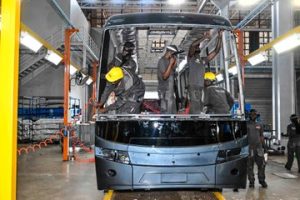
Kiira Motors Corporation has so far produced 37 electric vehicles and 27 Diesel coaches. It has a production prospect of 2,500 vehicles in the medium term, 5,000 in the long term and 10,000 annual production by 2030.
The event was attended by top government officials, including Finance Minister Matia Kasaija, Science and Technology Minister Monica Musenero, Justice and Constitutional Affairs Minister Norbert Mao, and senior officials from NEC and KMC.
